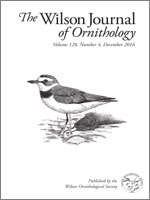The genus Chlorospingus is distributed from central Mexico to northern Argentina. Despite its wide distribution, natural history information is sparse. We present the first detailed breeding biology information for C. flavigularis, plus descriptions of the nest, eggs, and other natural history information for C. parvirostris and C. flavopectus based on 26 nests monitored (22 from C. flavigularis, two from C. parvirostris, and two from C. flavopectus) in the buffer zone of Manu National Park, Cusco, Peru. Nests of C. flavigularis were bulky open-cups placed on a variety of substrates (e.g., ferns, moss). The clutch size of C. flavigularis varied between two to three eggs, but clutch size for C. flavopectus and C. parvirostris was consistently two eggs. The eggs of all three species were white with small light-brown speckles. Incubation and nestling period for C. flavigularis was 17 and 14 days, respectively, and daytime nest attentiveness was 60%. Nest architecture, clutch size, and eggs encountered for these species were consistent with previous reports for the genus Chlorospingus. More nesting behavior studies are needed to fill the knowledge gap regarding all species of Chlorospingus to help us understand nesting requirements for this cloud forest genus.
How to translate text using browser tools
1 December 2016
Nesting Behavior of Three Species of Chlorospingus (C. flavigularis, C. Flavopectus, and C. parvirostris) In Southeastern Peru
Manuel A. Sánchez-Martínez,
Gustavo A. Londoño
ACCESS THE FULL ARTICLE
Andean mountains
breeding biology
eggs
incubation behavior
nestling period





